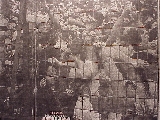

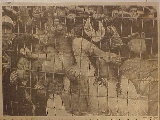
July 15, 2001
NOTE: Objections to this page have been raised, in response to which I have prepared a statement .
July 22, 2001
The incident was the result of poor crowd control, not a "riot"...Notes on further research
The three versions of the image shown below were published in, from left to right, Paris-Match, the New York Times Book Review, and the daily New York Times. At first glance, they might seem to be merely different croppings of the same shot... (Click on an image for an enlargement in a separate window.)
However, close inspection reveals that the shots are separated horizontally by small angular differences from left to right in the order in which I've arranged them. To see this, note how each image views the woman who is prominent at the lefthand edge of the rightmost image, as excerpted below.
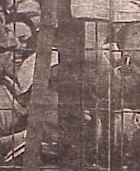
| 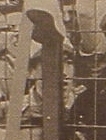
| 
|
|
Having established that the images are separated in space,
I show that they are apparently separated in
time.
I consider
certain contradictions between moving and motionless
elements in them.
|
|
Next, I consider how plausible it is that the number
of people represented by the
arms and hands
in the center of the picture occupy the space that
their arrangement implies.
|
|
Then, I examine some
other oddities.
|
|
Finally, I draw
conclusions about the veracity of these
images and what they might tell us about photojournalism
in general.
|
Below are details from the lefthand and middle images that show the person at the top turned in different directions. This means that the two photos were not taken simultaneously, contrary to the impression that might be given by their lower portions, in which the child appears not to have moved.
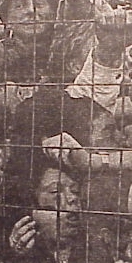
| 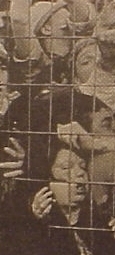
|
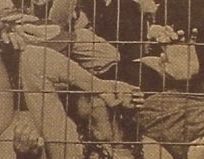
| 
|
I count 11 persons, consisting of four individuals whose heads are visible and seven others whose bodies are obscured, but whose hands are touching the wire. Obviously, the seven invisible persons have to be positioned immediately behind the four visible ones. Is this plausible? Perhaps this kind of thing could happen in a contest to pack telephone booths, in which volume is slowly and carefully filled. But it seems highly improbable in this purportedly chaotic situation, especially since the fence area on either side of this group doesn't seem closely packed (see full image below).
Are these the hands of people in distress?

| 
| 
|

| 
|
Return to the Scrapbook page
Return to the Scrapbook title page